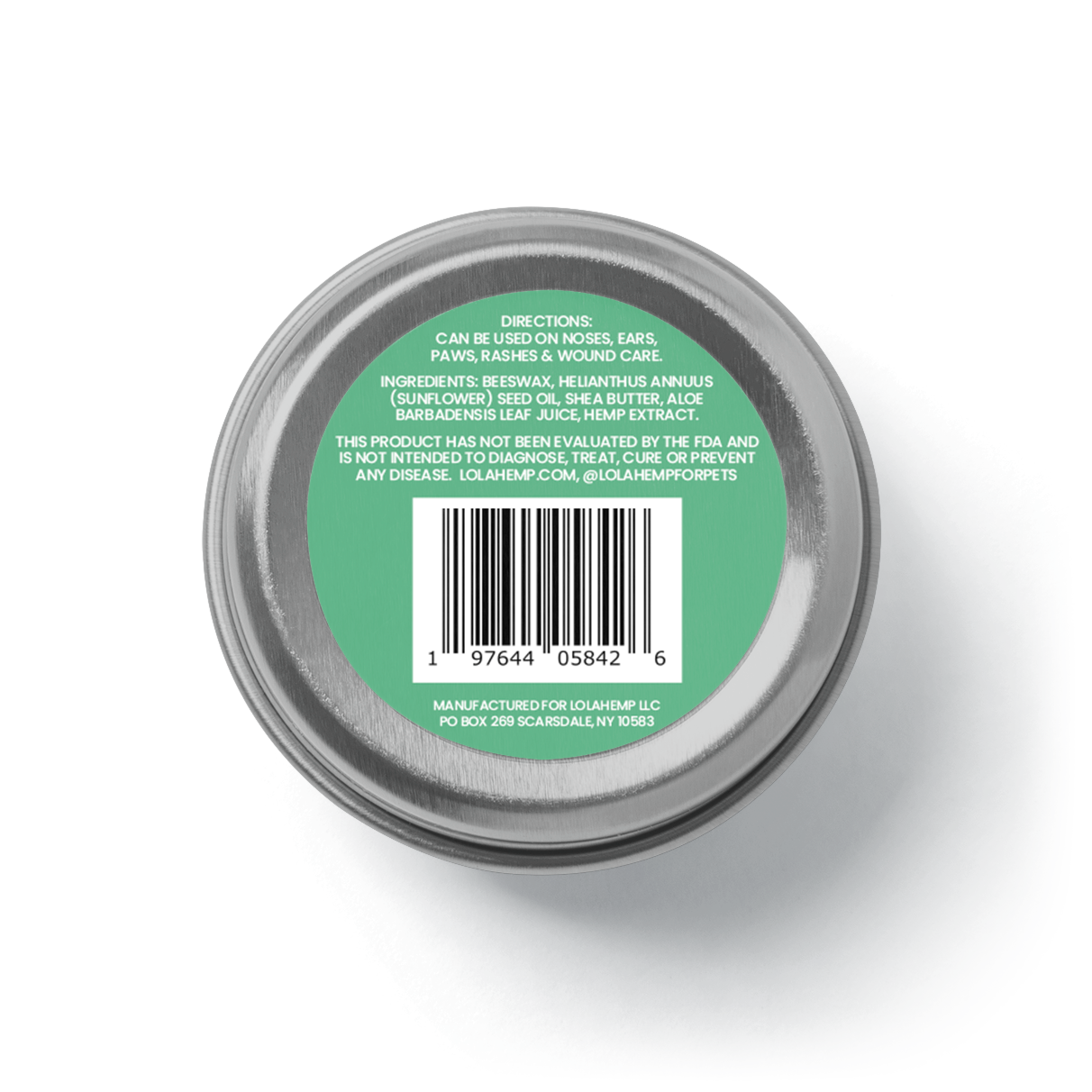When it comes to your cat's paw pads, it's common to wonder what's normal and what's unusual. The most common concern for cat owners is paw dryness.
The short answer: Cat paws should be generally dry, but not to the point of being rough or cracked. If your cat's paws are overly dry, this article offers potential causes and solutions.
If your cat's paws are dry, you can provide them some relief with the help of a balm or salve to moisturize and protect their paw skin. These balms can be a great help in dry weather, or during the period that you're diagnosing the underlying issue of your cat's paws.
What Causes Cracked Paws on Cats?
Your cat’s paw pads are naturally meant to be tough, but some unfavorable conditions can cause them to crack. As a pet owner, you need to know what these conditions are so as to manage them better, they include:
- Weather and Temperature
- Skin Health and Medical Conditions
- Nutrition
- Grooming
1. Hot and Cold Weather Can Cause Dry Paws
Most homes have cement pavements which may get very hot during warm months. Your cat has to frequently use these sun-heated pavements when they are on their usual walks, which can cause your cat’s paw pads to crack and potentially burn.
Hot pavements are not the only ones to watch out for, as cold surfaces also pose a risk to your cat’s paw pad.
Ice, snow, and freezing temperatures during winter seasons can cause your cat’s paw pads to become brittle and easily susceptible to cracking. The cold surfaces and dry air combination creates a perfect storm for your cat's paw pads to start cracking.
2. Dry Paws Could Indicate a Skin Condition
Your cat’s paw pads can be an early indicator of underlying health problems. Since they’re constantly in use and exposed to environmental stressors, issues often show up here first.
Common Causes:
- Infections and inflammation – swelling, redness, and discomfort
- Systemic conditions – skin health problems that affect the paws first
Signs to Watch For:
- Red or swollen paw pads
- Warmth when touched
- Discharge or oozing
- Limping or favoring a paw
- Excessive licking
If you notice these signs, check for injuries or consult a vet to rule out infections or underlying health issues.
3. Your Cat's Diet Can Impact Paw Health
A balanced diet is key to keeping your cat’s paw pads healthy. Without the right nutrients, their skin—including their paws—can suffer.
- A lack of essential fatty acids can lead to dry, brittle paw pads that crack easily.
- Dehydration is another common issue. If your cat isn’t drinking enough water, their paws (and overall skin) can become dry.
Making sure they get proper nutrition and hydration can help keep their paws soft and healthy. To support healthy paw pads, choose a high-quality cat food rich in omega fatty acids or add a vet-approved supplement. Make sure fresh water is always available, and consider incorporating wet food to boost hydration.
Cleaning Your Cat’s Cracked Paw Pad
To keep your cat’s paws healthy, establish a regular cleaning routine. Gently wipe their paws with a soft cloth and warm water to remove dirt and check for dryness or injury. Avoid harsh soaps that can irritate sensitive pads.
Preventing Future Dryness
- Routine Paw Inspections: Regularly check for cracks, dryness, or foreign objects between toes. Clean paws after walks or using the litter box.
- Nail Care: Trim nails regularly to prevent injury and maintain proper paw alignment.
- Safe Environment: Keep your cat away from extreme temperatures (hot pavement or icy surfaces) and maintain humidity to avoid dryness.
- Appropriate Surfaces: Provide safe, soft surfaces for walking and scratching to protect paw pads.
These simple practices will help prevent cracked paws and maintain overall paw health.
Conclusion
Keeping a cat’s paws healthy requires attention to multiple factors, including diet, environmental conditions, and underlying skin issues. A well-balanced diet rich in essential fatty acids and nutrients plays a key role in maintaining skin hydration, while extreme weather conditions—whether hot, cold, or dry—can contribute to cracked or irritated paw pads. Additionally, skin conditions such as allergies, fungal infections, or over-grooming can further exacerbate dryness, making it important for pet owners to identify and address the root cause of their cat’s discomfort.
By providing proper nutrition, adjusting environmental factors when necessary, and using protective measures such as pet-safe balms, cat owners can help keep their feline’s paws soft, moisturized, and free from irritation. Regular paw checks and veterinary consultations can also ensure that any persistent dryness or cracking is treated appropriately. With the right care, cats can remain comfortable and active, free from the discomfort of dry or damaged paw pads.
Frequently Asked Questions About Dry Paws in Cats
Are dry paws normal in cats?
Yes, cat paws are naturally dry, but they should not be rough, cracked, or uncomfortable. Excessive dryness may indicate an underlying issue.
What causes dry or cracked paws in cats?
Common causes include weather changes, skin conditions, dehydration, nutritional deficiencies, and exposure to harsh surfaces.
How can I moisturize my cat’s dry paws safely?
You can use a pet-safe balm or salve specifically designed for cats. Avoid human lotions, which may contain harmful ingredients.
When should I take my cat to the vet for dry paws?
Seek veterinary care if you notice swelling, redness, discharge, limping, or persistent cracking that doesn’t improve with basic care.
Can diet affect my cat’s paw health?
Yes, diets lacking essential fatty acids or adequate hydration can lead to dry, brittle paw pads. Proper nutrition supports healthy skin and paws.









